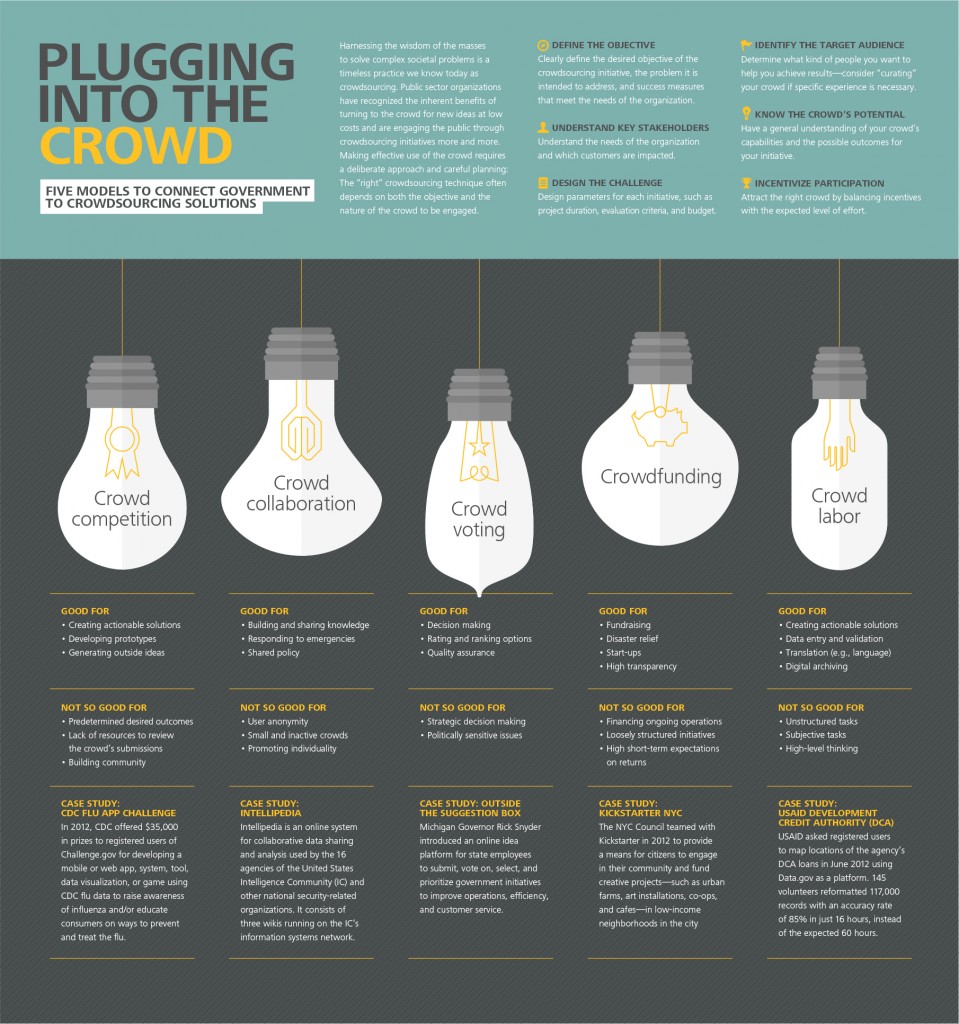Whilst I suspect the healthcare industry have been the biggest devotee of crowdsourcing over the past few years, it’s probable that the public sector are running them pretty close. Last summer IBM produced a report on the rise and role of crowdsourcing in government, in which they outlined some of the core strategic applications of crowdsourcing in government.
- Type 1: Knowledge Discovery and Management. Collecting knowledge reported by an on-line community, such as the reporting of earth tremors or potholes to a central source.
- Type 2: Distributed Human Intelligence Tasking. Distributing “micro-tasks” that require human intelligence to solve, such as transcribing handwritten historical documents into electronic files.
- Type 3: Broadcast Search. Broadcasting a problem-solving challenge widely on the internet and providing an award for solution, such as NASA’s prize for an algorithm to predict solar flares
- Type 4: Peer-Vetted Creative Production. Creating peer-vetted solutions, where an on-line community both proposes possible solutions and is empowered to collectively choose among the solutions.
Deloitte have had a go at outlining the steps by which the crowd can benefit government in their own report, published this summer. They outline three steps that they believe are crucial to successfully engaging the masses.
- Define your objectives
- Identify your audience, which of course can be internal as well as external
- Use the right approach, whether it’s a competition, crowdfunding and so on
On this last point, Deloitte have produced an infographic that provides an overview of the main forms of employing the crowd, which you can find below. Suffice to say, successful crowdsourcing is much more involved than anything covered in an infographic, but nevertheless it provides a reasonable overview to get you started. Check it out.
